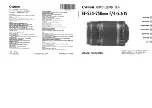
•
The machine must switch to the safe state at any time if at least one of the two
OSSDs switches to the OFF state
•
Prevent the formation of a potential difference between the load and the protec‐
tive device. If you connect loads to the OSSDs (switch outputs) that then also
switch if controlled with negative voltage (e.g., electro-mechanical contactor with‐
out reverse polarity protection diode), you must connect the 0 V connections of
these loads and those of the corresponding protective device individually and
directly to the same 0 V terminal strip. In the event of a fault, this is the only way to
ensure that there can be no potential difference between the 0 V connections of
the loads and those of the corresponding protective device.
Figure 31: No potential difference between load and protective device
DANGER
Hazard due to lack of effectiveness of the protective device
In the case of non-compliance, it is possible that the dangerous state of the machine
may not be stopped or not stopped in a timely manner.
Downstream contactors must be positively guided and monitored depending on appli‐
cable national regulations or required reliability of the safety function.
b
Make sure that downstream contactors are monitored (external device monitoring,
EDM).
DANGER
Hazard due to unexpected starting of the machine
A restart interlock must be implemented depending on applicable national regulations
or required reliability of the safety function.
b
Make sure that a restart interlock is implemented.
Requirements for the electrical control of the machine
Both outputs are short-circuit protected to 24 V DC and 0 V. When the protective field
is clear, the OSSDs are in the ON state. When a switch-off condition is present (e.g.,
interruption in the light path), the OSSDs are in the OFF state. In the event of a device
fault, at least one OSSD is in the OFF state.
The protective device complies with the rules for electromagnetic compatibility (EMC)
for the industrial sector (Radio Safety Class A).
NOTE
Using the device in residential areas may cause radio interference. The operating entity
is responsible for taking appropriate measures (e.g., shielding).
PROJECT PLANNING
4
8021645/1EB0/2022-04-28 | SICK
O P E R A T I N G I N S T R U C T I O N S | deTec4
55
Subject to change without notice















































